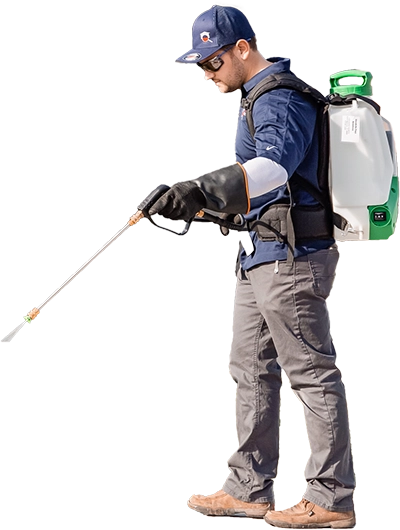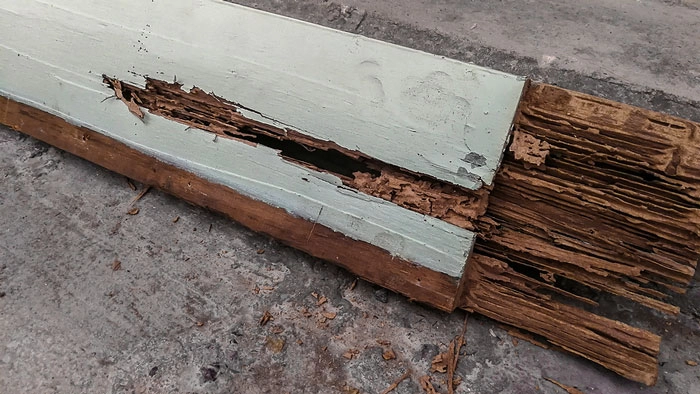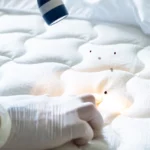Black mold, or Stachybotrys chartarum, is a toxic mold recognized for its black-colored growths. While there are many molds which are black, the most common household mold is lighter in color—white, light gray, or even pink—whereas black mold is dark black. S. chartarum is often found in dark, damp, and unventilated cellulose-rich environments: floors, walls, ceilings, and even in hard-to-see places like inside drywall and wood framing.
Like all mold, black mold grows in dark, damp places. Be on the lookout for its characteristic odor.
Mold is very common in buildings throughout the world. It grows in places with excess moisture, such as windowsills, bathrooms, basements, attics, and even the very foundation of your home if there are water leaks. Mold does not shy away from any material: it is known to grow on paper, cardboard, insulation, drywall, carpet, and more.
S. chartarum is not always completely black in color. Younger black mold colonies—which you may find if it has only recently gained a foothold in your space—are often dark green in color. In comparison to other common molds, black mold grows slowly, and only becomes fully black in color when well established. Some molds appear fuzzy in texture, whereas S. chartarum appears smoother, with an almost dirt-like texture. It often gets mistaken for dirt or grime, and therefore can go untreated. Black mold, like most mold, gives off a distinct musty odor. Even if you can’t see it—it may be inside walls or on a hard to reach surface—the smell can alert you or a professional to its existence.
Black mold grows outward from its point of origin. What starts as a small patch of mold can grow exponentially, given the right conditions—the right conditions for mold are the wrong conditions for you.
Water leaks are the cause of many mold outbreaks. Think about where water is likely to enter your space. Improperly sealed windowsills can allow water inside, and are a common source of black mold outbreaks. Basement and attic leaks can also contribute to black mold growth. But S. chartarum is certainly not limited to obvious locations. It’s known to grow anywhere there happens to be a leak or excess moisture. If you have a water leak or experience persistent humidity in your home or building, black mold may not be far behind… or may already exist.
S. chartarum is toxic. Inhaling the mold can produce a range of symptoms from mild irritation to nerve damage.
Those sensitive to allergies are especially prone to illness resulting from black mold. The mold excretes a class of irritants known as mycotoxins, which are toxic chemicals present on spores that get released into the air. Such mycotoxins can cause the illness mycotoxicosis—in layman’s terms, mold poisoning. Research has identified S. chartarum and its spores as the cause of mold poisoning, having documented evidence that the mold affects individuals living or working in contaminated buildings.
It’s important to note that mold poisoning is a category of illness; in other words, mold poisoning symptoms can differ person to person. Symptoms are severe for some and barely noticeable for others.
The main route for exposure to mycotoxins and resulting illness is through dust buildup in and around your space. As mold grows on a surface, spores release into the air and settle as dust. As this dust is kicked up and ventilated throughout the building, occupants unknowingly inhale the contaminated air. This air circulation can also lead to more mold growth, as spores are carried through the air and settle on new surfaces.
If you notice signs of mold and feel sick, it is best to contact a doctor.
Test for nonvisible signs of mold to uncover the full extent of your problem.
Think you have black mold? You might wonder if a test is required to determine its presence. As it turns out, a mold test is not always required. According to the EPA:
In most cases, if visible mold growth is present, sampling is unnecessary.
However, there are still instances where testing for mold is advisable. If you have visible mold, there is a chance you have nonvisible mold too. It may be behind old wallpaper or inside insulation. Using a mold testing kit can help you determine the level of mold in your home or business. You can buy a mold testing kit online and perform the test yourself. However, turning to a mold professional—who has experience identifying and treating both visible and hidden mold—can end up being the better choice.
You may happen to mistakenly test an area where there’s no mold, or another type of mold growth, while black mold is still lurking elsewhere. A mold mitigation professional can find black mold growth that is less obvious or hidden away.
Mold cleanup doesn’t always require professional attention, but particularly extreme cases can require removing and replacing materials affected by the mold.
While finding black mold in your home is not ideal, the good news is that it can be easy to clean. To eliminate visible mold, you should:
- Scrub mold off hard surfaces with detergent and water, and dry completely
- Clean your space of dust and any debris thoroughly and regularly
- Toss out absorbent or porous material (such as ceiling tile or carpet) and replace with new material
- Fix leaks wherever they may appear
Most people opt to scrub and clean surfaces of mold on their own. Some may contact a professional with help fixing leaks and removing absorbent material like carpet—it probably is a good idea to get in touch with a pro who can find and permanently fix water leaks, as water is one of the most common causes of mold.
If a mold service professional finds evidence of nonvisible mold, they may recommend removing contaminated areas completely. If so, expect a report with repair estimates.
Always keep in mind that mold is toxic. If you clean and scrub mold yourself, wear personal protective gear like a face mask and gloves. However, if you are already feeling ill, or you own a business where employees or the public spend time indoors, for a variety of liability and insurance reasons, it’s advisable you hire a professional who can ensure that the black mold problem is eliminated completely, and in a safe manner.
S. chartarum is a toxic black mold that thrives in wet, dark places. It can cause adverse health effects that vary in severity. Left untreated, black mold can grow exponentially and continue to pose a health threat. Keep your home or business clean, free of dust, and fix all water leaks to prevent black mold.




